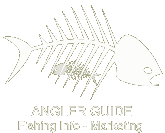 |  |
|
Navigation - Business - Great Lakes - Great Plains - Northeast - Northwest - Rocky Mountains - Southeast - Southwest - Technology - Trophy Catches
|
Three ocean salmon-fishing options approved today by the Pacific Fishery Management Council (PFMC) establish a lower harvest range for chinook to protect weak salmon stocks - particularly those returning to the lower Columbia River. The PFMC establishes fishing seasons in ocean waters three to 200 miles off the Pacific coast. Despite an expected increase in chinook abundance, the federal panel approved tighter restrictions to protect wild salmon stocks and meet conservation goals, said Phil Anderson, director of the Washington Department of Fish and Wildlife (WDFW). "Our first priority is to meet crucial conservation objectives for wild salmon," said Anderson, who represents WDFW on the management council. "The ocean options approved today are designed to meet or exceed those goals." Anderson said two of the options include recreational mark-selective fisheries for hatchery chinook that would begin in early June. If implemented, mark-selective fisheries for hatchery chinook would open ahead of the traditional recreational fishing season for the second straight year. Mark-selective fisheries allow anglers to catch and keep abundant hatchery salmon, which are marked with a missing adipose fin, but require that they release wild salmon. About 760,000 fall chinook are expected to return to the Columbia River this year, nearly 108,000 more chinook than last year’s forecast. A significant portion of that run - about 250,000 fish - is expected to be lower river hatchery chinook, which traditionally have been the backbone of the recreational ocean chinook fishery. For coho salmon, the ocean quota could be similar to or slightly lower than last year’s harvest guideline, said Anderson. This year’s forecast of 362,500 Columbia River coho, which account for a significant portion of the ocean catch, is similar to the 2010 projection. The PFMC is expected to approve final harvest guidelines for this year’s recreational ocean fishery in mid-April. The three options announced today establish parameters for state and tribal fishery managers in designing this year’s fishing seasons. The recreational fishing options are: Option 1 - 52,000 chinook and 79,800 coho; Option 2 - 42,000 chinook and 67,200 coho; and Option 3 - 32,000 chinook and 54,600 coho. Using these options as a framework, fishery managers will work with stakeholders to develop a final fishing package that provides opportunities on healthy salmon runs while meeting conservation goals for weak salmon populations, said Anderson. "Our goal is to provide a full season of fishing for chinook and coho," Anderson said. "But to accomplish that we will likely need to use management tools such as restricting the number of days open each week and adjusting daily bag limits." The PFMC last year adopted recreational ocean fishing quotas of 61,000 chinook and 67,200 coho salmon. Under each option for this year, the ocean recreational fishery would vary: Option 1: The recreational salmon fishing season would begin June 4 with a mark-selective fishery for hatchery chinook in marine areas 2 (Westport/Ocean Shores) 3 (LaPush) and 4 (Neah Bay). In Marine Area 1 (Ilwaco), the season would begin June 11. The selective fishery would run seven days a week, with a daily limit of two salmon, through June 25 or until 12,000 hatchery chinook are retained. The recreational salmon season would continue June 26 in all coastal areas for chinook and hatchery coho. Anglers would have a daily limit of two salmon. In marine areas 2, 3 and 4, anglers would also be allowed to retain two additional pink salmon. Option 2: The recreational salmon fishing season would begin June 11 with a mark-selective fishery for hatchery chinook in all ocean areas. The fishery would run seven days a week, with a daily limit of two salmon, through June 25 in Marine Area 1 and through June 30 in marine areas 2, 3 and 4 or until 12,000 hatchery chinook are retained. The recreational salmon season would open for chinook and hatchery coho June 26 in Marine Area 1; July 1 in marine areas 3 and 4; and July 3 in Marine Area 2. Anglers fishing those marine areas would be allowed to retain one chinook as part of a two-salmon daily limit. Anglers also would be allowed one additional pink salmon each day in marine areas 2, 3 and 4. Option 3: Recreational salmon fisheries would begin with mark-selective fisheries for hatchery chinook and hatchery coho. Those fisheries would get under way June 24 in marine areas 3 and 4; June 26 in Marine Area 2; and July 3 in Marine Area 1. Wild chinook retention would be allowed beginning in late July. More details on these ocean options, including proposed fishing days per week, are available on PFMC’s website at www.pcouncil.org/ . Chinook and coho quotas approved by the PFMC will be part of a comprehensive 2011 salmon fishing package, which includes marine and freshwater fisheries throughout Puget Sound, the Columbia River and Washington’s coastal areas. State and tribal co-managers are currently developing those fisheries. The co-managers will complete the final 2011 salmon fisheries package in conjunction with the PFMC process during its April meeting. Meanwhile, public meetings are scheduled in March to discuss regional fisheries issues. A public hearing on the three options for ocean salmon fisheries is scheduled for March 28 in Westport. Fishery managers will consider input from the regional discussions during the "North of Falcon" process, which involves planning for fishing seasons in Washington’s waters. Two public North of Falcon meetings are scheduled for March 15 in Olympia and April 5 in Lynnwood. Both meetings will begin at 9 a.m. More information about the salmon-season setting process, as well as a schedule of public meetings and salmon run-size forecasts, can be found on WDFW’s North of Falcon website at http://wdfw.wa.gov/fishing/northfalcon/ .
Comments
«Back | News Home
| |||||||||||||||||||||||||||||||||||